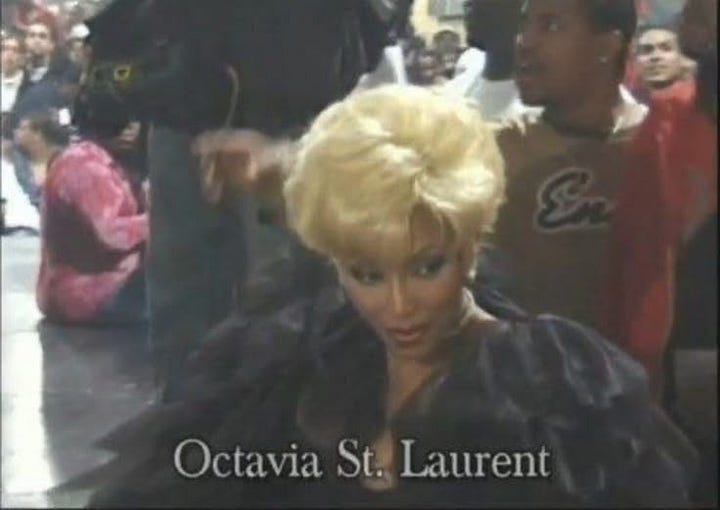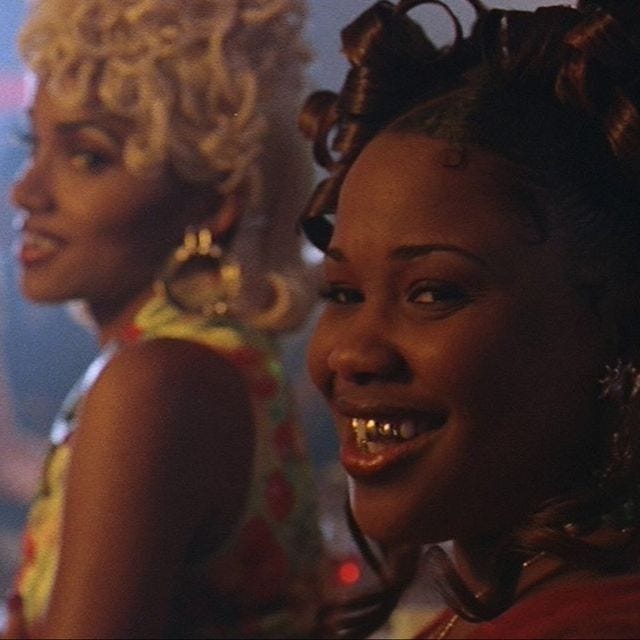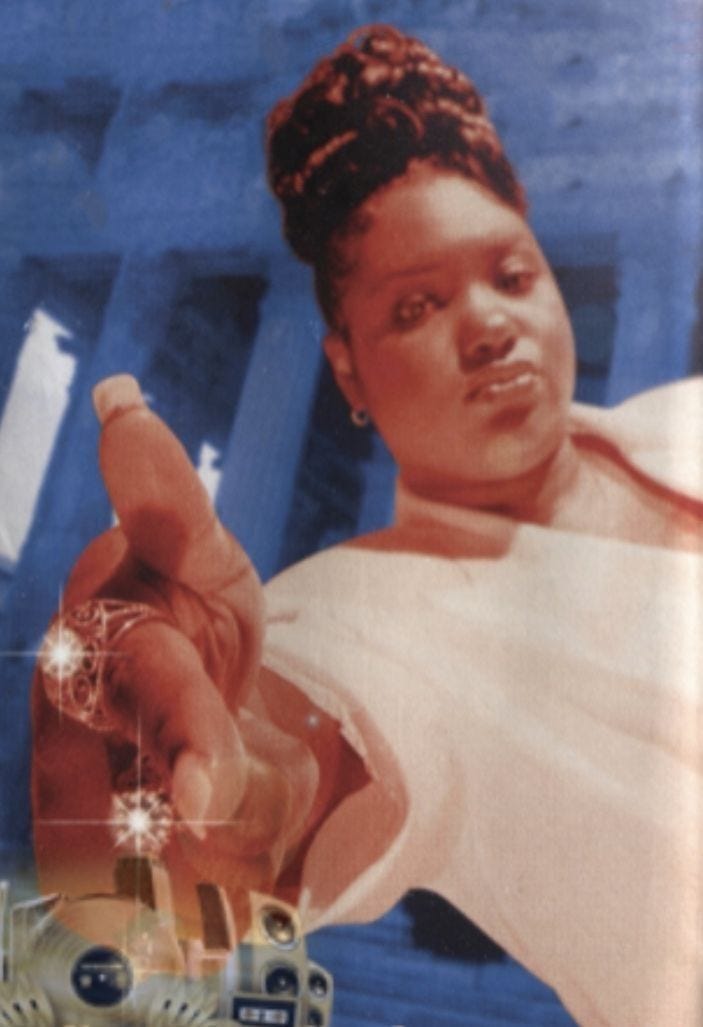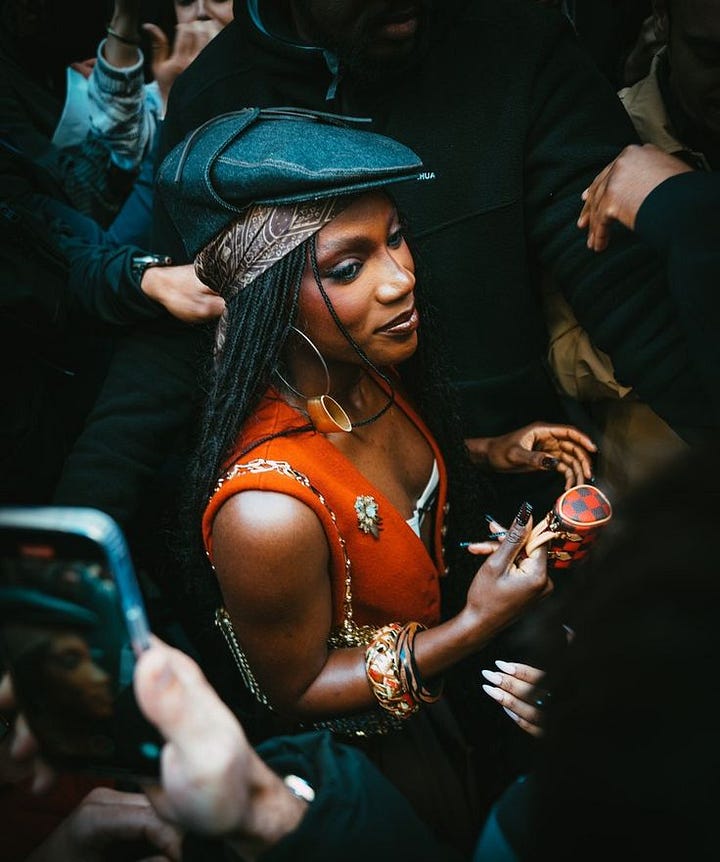By Shareece Williams — The OG of The Creative Visionary
To be a Creative Visionary is more than just being good at your craft—it is to live with vision, think with intent, and build with purpose. It is a philosophy, a lifestyle, and a commitment. This isn’t a path for the faint of heart; it’s a role for those who feel called to reimagine what society can be and are willing to use their creativity as the tool to carve out that future. The Creative Visionary stands at the intersection of artistry, intellectual thought, activism, and leadership—rooted in a belief system that says creativity can, should, and will change the world.
This essay unpacks the foundational philosophies that guide the Creative Visionary. Each principle serves as a lens for how we show up, create, lead, and think. It’s not just about producing work. It’s about understanding the systems we are working within, challenging them, and then building our own. These philosophies are:
Different Types of Ideologies
Creativity and Change-Making at the Core
Intellectual Thinking
Building Through Leadership
Let’s go deeper.
1. Different Types of Ideologies: The Foundation of Thought
One of the most misunderstood truths about Creative Visionaries is that we are not just artists, but we are ideologists. Our creativity is shaped by what we believe, how we view the world, and what systems we’re willing to dismantle or reconstruct. So we must start by acknowledging that the philosophy of a creative visionary begins with the ideologies we subscribe to or consciously reject.
An ideology isn’t just political; it’s a belief system. Some of us are abolitionists. Some of us are spiritualists. Some of us blend Afro-surrealism with radical Black feminism. Some of us aren’t even sure what we believe yet; we just know what we’re not. And that too is part of the journey.




There are cultural ideologies, the ones passed down through lineage, language, and legacy. These shape how we love, resist, celebrate, and mourn.
There are artistic ideologies, born out of creative movements and media histories—from Dadaism to Hip Hop, from punk to performance protest art.
There are social ideologies, like mutual aid, liberation, community sovereignty, and collective healing.
And there are personal ideologies, shaped by trauma, curiosity, observation, and transformation.
A true Creative Visionary doesn’t avoid ideology; we wrestle with it. We question what we were taught, dismantle what doesn’t align, and rebuild with clarity. This is what makes our work deeper than surface. We are not just expressing, but we are communicating belief systems in motion.
We ask:
What do I believe about the world?
What am I here to change, challenge, or amplify?
Where do my beliefs and my creative practice meet?
Ideology isn’t a box—it’s a compass. It points us toward the kind of work we want to create and the kind of world we want to live in. It also helps us identify what kind of visionary we are: the cultural critic, the poetic protestor, the reformer, the disrupter, the healer, the builder.
The key is to choose your beliefs, not blindly inherit them.
2. Creativity and Change-Making Is at the Core of Everything We Do
Creativity is not a luxury. It is not a side hustle. It is not only a form of expression—it is the engine of innovation, communication, and transformation.
As Creative Visionaries, we believe that creativity is how we create change. Not through begging institutions for crumbs. Not through shrinking ourselves to fit inside broken systems. But by creating alternative futures, new pathways, and cultural shifts. We aren’t just painting pictures or choreographing movement—we’re building new worlds. And every world begins with imagination.
Think about the visionary power of Black creatives. When someone like Ryan Coogler directs Sinners, he’s not just telling a story, but he’s elevating community-rooted narratives that challenge how we define masculinity, power, and healing.
This is what change through creativity looks like. It’s not always political in the traditional sense, but it is disruptive. It is intentional. It makes people feel something, and that feeling becomes a spark.
This is why our philosophy says: create to be heard, not to hide.
You don’t need a massive platform or funding to make change. What you need is the commitment to put your full self into your work. When you do that—when your creativity reflects your values, your story, your dreams—change begins.
Creativity is the core.
So we ask:
What needs to change in the world, and how can my creativity spark that change?
What does my art say when I’m not speaking?
Am I playing it safe, or am I creating with courage?
We are the culture-shapers, the idea-generators, the myth-breakers, the seed-planters.
3. Intellectual Thinking: The Inner Engine of the Visionary
The Creative Visionary is not just someone who creates. We think. Deeply. Critically. Relentlessly. We ask the uncomfortable questions. We explore connections others overlook. This is where our intellectual thinking comes in. It’s not just about being “smart.” It’s about engaging the world with a conscious and analytical lens that fuels the creative process.
Intellectual thinking is the backbone of visionary work.
It allows us to move beyond surface aesthetics and into purpose-driven artistry. It’s what separates a project that looks good from one that means something. It’s the difference between art as decoration and art as declaration.
As visionaries, we study. We read essays, we analyze interviews, we question systems, we binge films not just for entertainment, but to understand structure, symbolism, subtext. Our minds are always collecting, processing, decoding. We treat knowledge like an evolving canvas.
This doesn’t mean you have to be an academic. You can be a scholar of the streets, of your culture, of your trauma, of your experiences. Intellectual thinking is about intentional thought. It’s about layering your work with meaning and being able to stand behind it with conviction.
When I create, I don’t just think about the “what” or the “how.” I think about the “why.”
Why does this story matter?
Why is this composition structured this way?
Why does this piece of choreography feel like protest?
We study philosophy, sociology, politics, psychology, and not because we want to sound deep, but because we want to understand the world we're trying to influence. You can't transform what you don't understand. And you can't lead people if you don't know where you're standing.
This mindset builds creative integrity. It means that our work doesn’t just follow trends, but it challenges norms. We aren’t afraid of being complex, because we know our audience is capable of engaging with complexity. Visionaries trust people to think. We trust ourselves to go deeper.
Intellectual thinking also means being a student of your own mind. How do you process information? What inspires you conceptually? What philosophies resonate with your identity, your background, your vision?
Some of us draw inspiration from James Baldwin and bell hooks. Others from Octavia Butler, André 3000, or Tupac. Some of us build our own frameworks, because our lives never fit into the ones that existed before.
As Creative Visionaries, we embrace this internal work. We understand that depth makes us better creators. That research enhances imagination. That intellect sharpens intuition.
So we ask:
What is the philosophical root of my work?
Am I thinking critically about what I create and consume?
How does my intellect show up in my visuals, my performance, my structure?
Creativity without thought is noise. Thought without creativity is theory. But when the two meet—something revolutionary happens.
4. Building Through Leadership: Vision Is Nothing Without Action
If creativity is the heart, and intellect is the mind, then leadership is the hands. It’s how we move from theory to impact, from vision to execution. A Creative Visionary doesn’t just imagine new worlds, friend, we build them. Brick by brick. Team by team. Idea by idea. Leadership is what holds our philosophy together.
But let me be clear: we’re not talking about the corporate version of leadership, or the hierarchical kind that exists only to hold power. I’m talking about creative leadership—a leadership rooted in care, clarity, culture, and the courage to disrupt systems that no longer serve us.
To lead as a visionary is to carry responsibility without ego. To direct a team, guide a project, or mentor others not because you want credit, but because you want collective growth. It’s being willing to teach, to learn, and to listen. It’s staying grounded while staying bold.
Leadership in the visionary sense means:
Making decisions with integrity, not convenience.
Taking the risk first, so others know it’s possible.
Knowing how to structure a movement or creative collective, not just start one.
Being present in the process, not just obsessed with the outcome.
You can be an introvert and still be a leader. You can be quiet and still be powerful. You can be figuring it out and still be capable of guiding others. What matters is your intention. Visionary leaders don’t lead with fear or perfectionism; they lead with clarity of purpose.
When I think about leadership, I think about all the times I didn’t wait for someone to give me permission. I built platforms from scratch. I developed frameworks to help others. I structured teams, brands, institutions, art spaces—because I saw a gap and decided I would fill it.
I also think about how I’ve failed. And how every failure made me more aware, more flexible, more prepared. Because leadership isn’t just about showing the way, but it’s about growing through the journey.
As a Creative Visionary, you are a builder. And builders don’t just start projects; they steward them. They finish what they start. They revise when needed. They know when to delegate and when to dig deep.
We don’t just have ideas. We have execution. And that’s what sets us apart.
So ask yourself:
What am I building, and who is it for?
Am I creating structures that support others, not just myself?
How am I modeling visionary leadership for those watching?
Whether it’s a dance team, a film collective, an online magazine, a survivor support network, or an art institution; visionaries create frameworks. And those frameworks become blueprints for others.
You are not just an artist. You are a leader with vision, structure, and direction.
The Visionary Is a Way of Life
Being a Creative Visionary is not a trend or a title. It’s a calling. A responsibility. A way of seeing the world through a wide lens and still zooming in to care about the details. It’s choosing to show up even when it’s easier to disappear. It’s being brave enough to imagine, and relentless enough to build.
This philosophy isn’t just something we talk about. It’s something we live.
We live it when we challenge the status quo with our work.
We live it when we build systems of care, creativity, and community.
We live it when we say no to what doesn’t align and yes to what deeply calls us.
The Creative Visionary:
Thinks critically.
Creates intentionally.
Leads boldly.
Believes deeply.
And in doing so, we change culture—not accidentally, but by design.
We don’t just follow paths.
We carve them.
We don’t just respond to injustice.
We reimagine the structures entirely.
We don’t just make art.
We create meaning.
We don’t just create movements.
We build legacies.
This is the philosophy of The Creative Visionary.
It is your compass. Your toolkit. Your anchor. Your invitation.
You are not here to play small. You are here to create something the world has never seen before.
So… what will you build?
New Release: The Creative Visionary Guidebook: The Prequel is here!
This is more than a guide; it’s a call to reclaim your voice, your vision, and your creative power. Whether you're an artist, disruptor, or dreamer, this book is your invitation to create with purpose and lead with truth.
Start your journey now → https://payhip.com/b/ALQYg
Purposeful Creativity in the Creative Visionary Process
By Shareece Williams — The OG of The Creative Visionary
























This was beautiful! As someone who struggled with creating from courage, I’m inspired. 👏🏾
<3